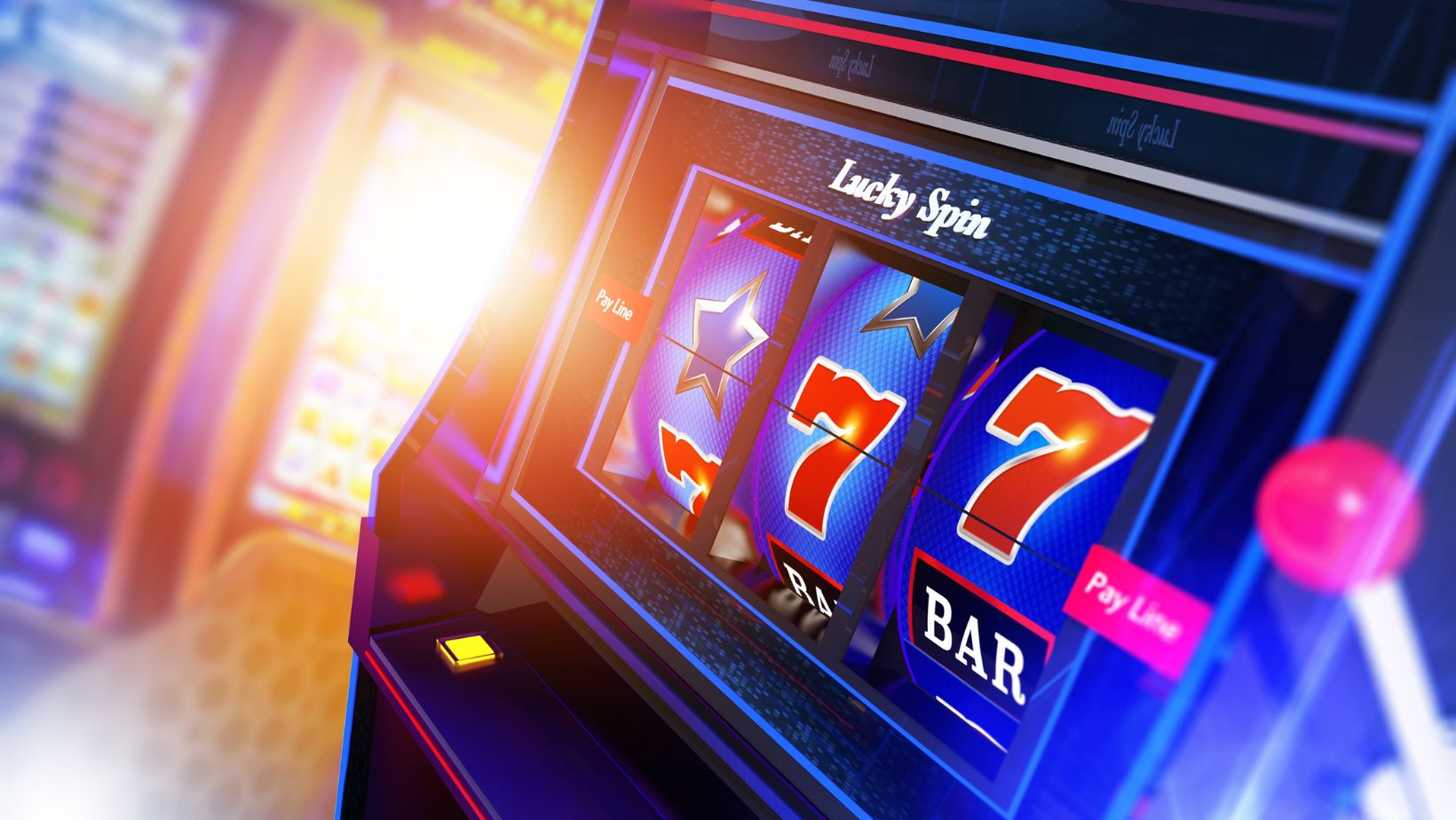When you walk into a casino, it’s almost impossible to ignore the vibrant, flashing lights and the inviting jingle of slot machines. There’s something about these colorful contraptions that draws people in, even those who may not normally consider themselves gamblers. For some, it’s the simplicity, for others, it’s the allure of a big win. Slot machines are not just about luck; there’s an intricate layer of mathematics woven into every spin that keeps them both entertaining and unpredictable.
Slot machines seem so simple—just press a button or pull a lever, and hope for a win. But hidden behind those spinning reels is a sophisticated algorithm designed to ensure randomness and profitability for the casino. This blog will peel back the layers of mystery behind these seemingly magical machines and help you understand how mathematics and probability come into play, quite literally.
The Basics of Slot Machine Mechanics
First, let’s take a brief look at some historical events. In the latter half of the 19th century, slot machines were initially developed as mechanical devices. Spinning actual reels was accomplished by the early versions with the use of springs, gears, and levers. Players had to pull down a lever—a motion that earned them the nickname “one-armed bandits.”
Fast forward to today, and the one-armed bandits have been transformed into sleek, software-driven digital machines. Slot machines have evolved from simple mechanical systems to sophisticated devices that use random number generators (RNGs) and complex software algorithms to determine outcomes. While the buttons and screens may look simple enough, behind them is a lot of math that governs what you see and whether or not you win.
The Random Number Generator Explained
At the heart of every modern slot machine is the Random Number Generator (RNG). This RNG is what ensures the outcomes of each spin are entirely unpredictable. RNGs are special algorithms that generate numbers at lightning speed—thousands of numbers per second—with each one corresponding to a particular arrangement of symbols on the reels.
You might wonder, how random is “random”? It’s important to understand that slot machines use what’s known as a pseudo-random number generator (PRNG). Unlike true randomness, which might be generated from a physical process like radioactive decay, PRNGs use a mathematical formula to generate sequences of numbers. The result may not be “truly” random, but for all practical purposes, it’s random enough that no human can predict what’s coming next.
RNGs make sure that every spin is completely independent of any previous spin. This means that whether you just lost ten spins in a row or won big on your last spin, your next outcome is completely unaffected. The allure of slot machines often lies in this unpredictability—every spin is a fresh start, and you never know what could happen.
Probability and Slot Machines
Probability is another critical component in understanding how slot machines work. When you look at a slot machine with several reels and symbols, each of these symbols comes with a specific probability of landing on a particular reel. For example, a cherry might have a 1-in-10 chance of appearing, while a special bonus symbol could be even rarer.
Consider a basic slot with three reels, each containing ten symbols. To win the jackpot, you need to match three specific symbols across all three reels. The probability here is 1/10 * 1/10 * 1/10, or a 1-in-1,000 chance. While the visual presentation may make it seem achievable, in reality, the odds are heavily stacked against you.
This brings us to one of the biggest misconceptions about slot machines: the notion that a win is “due” after a series of losses. This is called the gambler’s fallacy—the mistaken belief that past outcomes influence future probabilities. In truth, each spin is entirely independent. You could hit a jackpot on your first try or spin a thousand times without a big win; there’s no “due” or “pattern” to follow.
Paylines, Volatility, and Payouts
The next piece of the puzzle involves paylines and volatility. A payline is the line on which a payout will be awarded if certain symbols line up in the correct order. Early mechanical slots had just one payline, but modern slots can have dozens or even hundreds of paylines, crisscrossing in various patterns. The more paylines you activate, the more likely it is that you’ll hit a winning combination, but it also means you’ll be betting more per spin.

Volatility, sometimes called variance, is another key concept in slots. IIt provides an explanation of the degree of danger that is connected to the equipment. Slots with a high level of volatility may have a lower number of wins, but the payouts are often higher. Slot machines with low volatility, on the other hand, pay out more regularly, but the profits generated by these games are typically less substantial. Understanding volatility helps you decide what type of experience you’re looking for—whether you prefer small, steady wins or the thrill of chasing a big jackpot.
Slot machines also have pay tables, which list all the possible combinations and their respective payouts. This is where you can find out what each symbol is worth and the specific rules of that slot machine. It’s always wise to look at the pay table to get a sense of what you’re in for before you start playing.
Return to Player (RTP) and House Edge
Another term that frequently comes up in slot machine discussions is Return to Player (RTP). Return to player (RTP) is the average amount that a slot machine will give back to players over the course of its lifetime, represented as a percentage. An example of this would be a slot machine that has a return to player percentage (RTP) of 94%, which indicates that it will return $94 for every $100 that is bet on it.
Of course, this is a long-term average—you could easily lose $100 without getting anything back, or win $200 from a single $1 spin. The casino keeps the remaining percentage as the house edge, which guarantees their profitability in the long run. The higher the RTP, the better it is for the player, but it’s worth noting that the house always retains an edge, however small.
The Mathematics of Big Wins
Jackpots, especially progressive ones, are perhaps the most exciting aspect of slots. A progressive jackpot accumulates as more players spin the reels, making it grow larger until one lucky player hits it. The mathematics behind progressive jackpots is based on a small percentage of each wager being added to the total jackpot.
The odds of winning a progressive jackpot are astronomically low, but that’s precisely why the payouts can be so high. The allure is undeniable: for a small bet, the potential of a life-changing win makes it feel like a risk worth taking. However, it’s crucial to remember that playing slots can look very easy, but the reality is that hitting those massive wins comes down to an incredible amount of luck, all driven by the RNG and sheer probability.
Common Misconceptions About Slot Machines
Many myths have grown around slot machines over the years. One of the most common is the belief in “hot” and “cold” machines. Players often think that if a machine hasn’t paid out in a while, it’s “due” for a win. Similarly, others believe that winning means a machine has now gone “cold.” As mentioned earlier, every spin is independent, meaning that the concept of hot and cold machines is just a myth.

Another myth is that your chances of winning change based on factors like the time of day or the amount of your bet. The RNG continues to operate regardless of when or how you play, meaning these elements do not affect your chances of winning. Timing strategies or trying to manipulate the system simply won’t work when dealing with modern slot algorithms.
Ethical Considerations of Slot Machine Design
While understanding the mathematics behind slots can help players make informed decisions, it’s also important to discuss the ethical aspects of slot machine design. Casinos use a lot of psychological tactics to make slots more addictive. The bright colors, cheerful sounds, and even the feeling of near misses are all designed to keep you playing longer.
Knowing this can help you gamble responsibly. If you understand the odds and the fact that the casino always has the upper hand, you’re more likely to treat slots as a form of entertainment rather than a way to make money. Always set limits for yourself, both in terms of time and money, and know when to walk away.
Understanding The Real Math Behind Slot Machines
Slot machines are fascinating devices, combining entertainment with mathematics in a way that makes them endlessly alluring. By understanding the basics of RNGs, paylines, volatility, and RTP, you can make more informed decisions and better appreciate the mechanics behind each spin. Remember, the thrill of slot machines lies in their unpredictability, and while the odds are never in your favor, they do offer a unique kind of entertainment.
So next time you find yourself drawn to the flashing lights and spinning reels, remember the mathematics behind the magic. Have fun with the game for what it is: a chance to have a good time, with a very little chance of earning a significant amount of money. And you never know? If you’re fortunate, you could even get that lucky spin. Always bear in mind, however, that it is all about chance, and the true victory is in maintaining control of the situation.














































































































